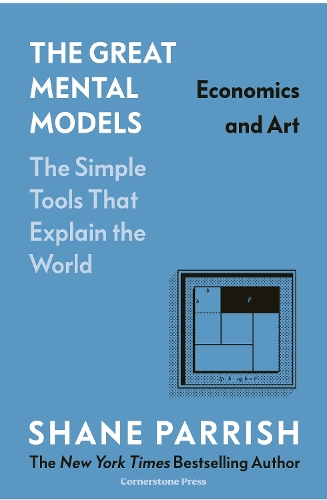
The Great Mental Models: Economics and Art
(Hardback)
Available Formats
Hardback
Published: 19th November 2024
Hardback
Published: 19th November 2024
Hardback
Published: 19th November 2024
Hardback
Published: 19th November 2024
Hardback
Published: 17th November 2024
Hardback
Published: 17th November 2024
Hardback
Published: 17th November 2024
Hardback
Published: 17th November 2024
Publishing Details
The Great Mental Models: Economics and Art
By (Author) Shane Parrish
By (author) Rhiannon Beaubien
Cornerstone
Cornerstone Press
17th November 2024
17th October 2024
United Kingdom
Classifications
General
Non Fiction
Neuro Linguistic Programming (NLP)
Decision theory: general
Economics
153.1
Physical Properties
Hardback
416
Width 143mm, Height 223mm, Spine 37mm
499g
Description
A cult bestseller in the US, available around the world for the first time, The Great Mental Models introduces the simple tools we all need to see the world clearly. Time and time again, great thinkers like Warren Buffett and Charlie Munger have credited their success to mental models- simple representations of how the world works that can be applied in a wide array of contexts. Mastering a small number of these concepts enables you to rapidly grasp new information, identify patterns others don't, and better anticipate outcomes. The Great Mental Models introduces the most powerful models that anyone can use right away to improve decision making and productivity. In this volume, Shane Parrish introduces the universal concepts that underpin better thinking, including- Creative destruction- New innovations must sometimes come at the cost of the maintaining the status quo. Representation- The depiction of an idea can be visual, but it can also rely on symbols or other ideas. Genre- A form of communication with socially constructed norms developed collaboratively over time. Building a latticework of mental models is one of the most powerful things you can do to become a better thinker, leader, or creator. The Great Mental Models is the accessible guide you need to unlock this ability.
Author Bio
Shane Parrish is the creator of Farnam Street, the world's most read blog on the art and science of decision-making. His first book, Clear Thinking, was an instant New York Times bestseller and was described by James Clear as 'a masterwork'.
